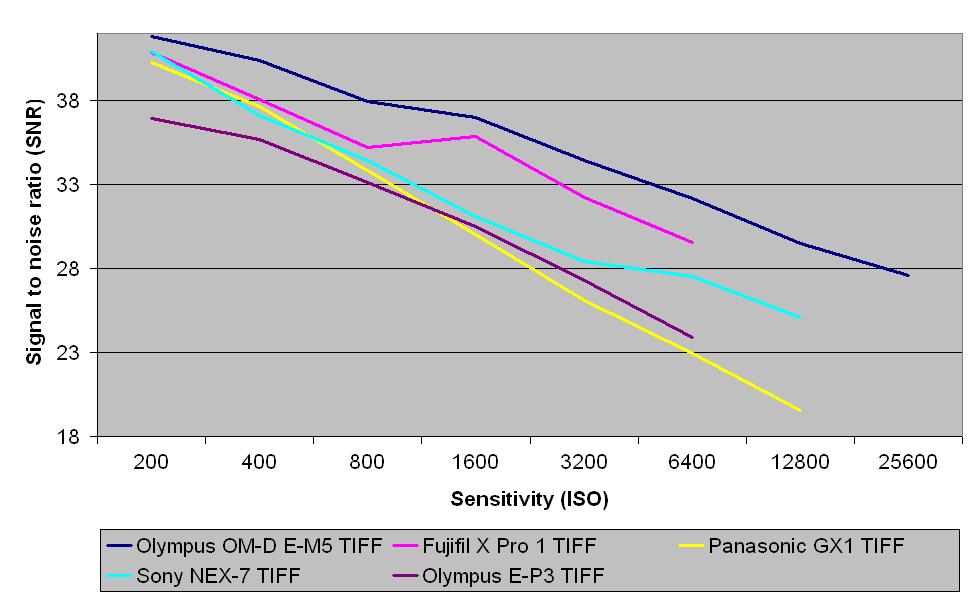Why you can trust TechRadar
We shoot a specially designed chart in carefully controlled conditions and the resulting images are analysed using DXO Analyzer software to generate the data to produce the graphs below.
A high signal to noise ratio (SNR) indicates a cleaner and better quality image.For more more details on how to interpret our test data, check out our full explanation of our noise and dynamic range tests.
Our results from the lab have been compared against the Fujifilm X Pro 1, Sony NEX-7, Panasonic GX1 and Olympus E-P3
Our analysis shows that the Olympus OM-D's raw files (after conversion to TIFF) produce impressive results that beat all the comparison cameras and compare well against models with larger APS-C and full frame sensors. When it comes to dynamic range, the raw file (after conversion to TIFF) results show it produces the highest result so far gained by any compact system camera.
JPEG signal to noise ratio

JPEG images from the Olympus OM-D E-M5 have a lower signal to noise ratio than the Fujifilm X Pro 1, Panasonic GX1, Sony NEX-7 and Olympus E-P3 up to a sensitivity of ISO ISO 1600. However above this sensitivity value the OM-D produces better results than all but the Fujifilm X Pro 1.
TIFF signal to noise ratio

TIFF images (after conversion from raw) from the OMD have a better signal to noise ratio than those from the Fujifilm X Pro 1, Panasonic GX1, Sony NEX-7 and Olympus E-P3, showing that the camera copes well with noise.
JPEG dynamic range

Raw dynamic range
This chart indicates that the Olympus OM-D's JPEGs have a consistently high dynamic range across the sensitivity range, showing that tonal gradations are captured well in the highlights and shadows even at the top end of the sensitivity range.
Sign up for breaking news, reviews, opinion, top tech deals, and more.

TIFF images (after conversion from raw) have a high dynamic range across the sensitivity range, with the OM-D achieving the highest result we've seen for any compact system camera. The chart shows that compared against the E-P3 the E-M5 is achieving at least 3EV greater dynamic range across all sensitivities.

Amy has been writing about cameras, photography and associated tech since 2009. Amy was once part of the photography testing team for Future Publishing working across TechRadar, Digital Camera, PhotoPlus, N Photo and Photography Week. For her photography, she has won awards and has been exhibited. She often partakes in unusual projects - including one intense year where she used a different camera every single day. Amy is currently the Features Editor at Amateur Photographer magazine, and in her increasingly little spare time works across a number of high-profile publications including Wired, Stuff, Digital Camera World, Expert Reviews, and just a little off-tangent, PetsRadar.
